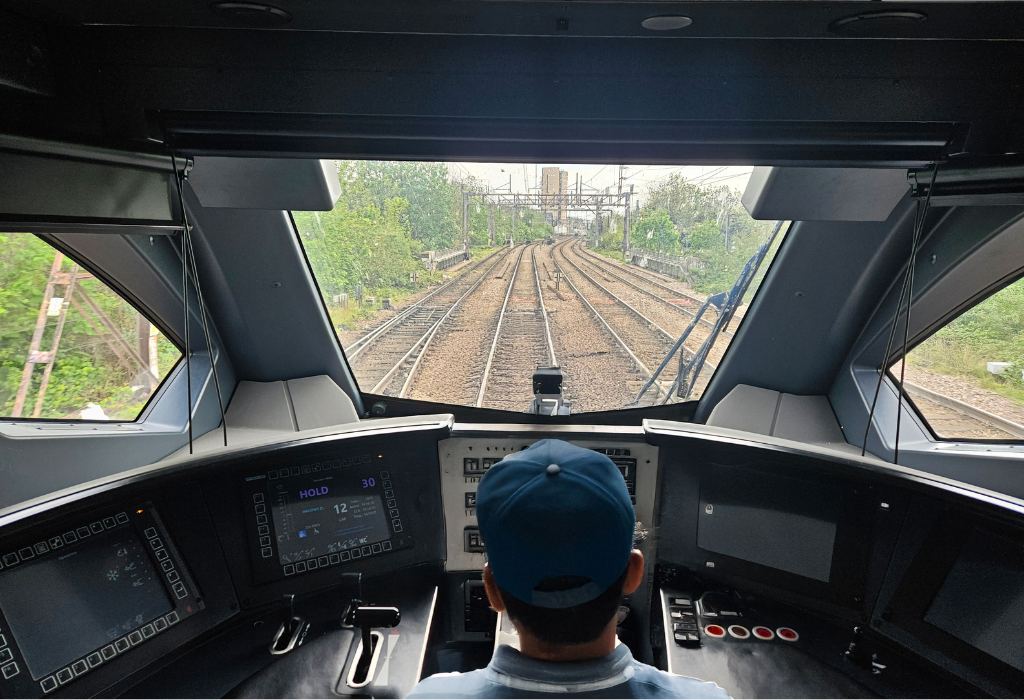FAQs
Zelra’s glossary of rail technology terms

This glossary explains key terms, acronyms, and concepts used across Zelra’s Driving Advice System (DAS), Connected Driving Advice System (C-DAS), and Workforce Management (WFM) solutions. It supports our customers and industry stakeholders by clarifying Zelra’s terminology in the context of rail operations, decarbonisation, and digital transformation.
The expected operational lifespan of rolling stock and infrastructure. DAS extends asset life by reducing wear caused by excessive braking and overspeeding. Learn more.
Data and insights generated from DAS, C-DAS, and WFM that support rail operators in analysing performance, reducing costs, and planning improvements. Learn more.
The enhanced version of DAS that connects trains through a Traffic Management System (TMS) or other digital system, enabling synchronised train movements, junction optimisation, and improved network capacity. Learn more.
The measurable decrease in CO2 emissions achieved through efficiency improvements. DAS and C-DAS support this outcome by cutting unnecessary fuel use. Learn more.
Software providing real-time driving advice to train drivers that optimises energy use, improves punctuality, enhances situational awareness for drivers, and reduces carbon emissions. Learn more.
The process of reducing carbon emissions across rail operations. DAS supports decarbonisation by cutting energy use and fuel consumption. Learn more.
A performance metric used in rail to measure delays against timetabled arrival times. DAS reduces delay minutes by helping drivers maintain punctuality. Learn more.
Advanced train signalling and control technologies, including ETCS, that improve safety and efficiency. Zelra’s DAS integrates with digital train control systems. Learn more.
A driver who advocates for and trains colleagues in using DAS, helping to ensure cultural acceptance and successful adoption within rail companies. Learn more.
The process of standardising driving behaviours across a fleet using DAS data and in-cab advice, improving timetable compliance and efficiency. Learn more.
A driving technique supported by DAS that reduces energy use by adjusting acceleration, coasting, and braking patterns without compromising safety or schedule adherence. Learn more.
The practice of minimising energy use during rail operations. DAS provides real-time advice that optimises acceleration, coasting, and braking. Learn more.
A European standard for train control and signalling that enforces safety-critical limits such as train movement and speed. DAS integrates with ETCS without conflicting with its authority. Learn more.
The measure of how effectively fuel or energy is used in rail operations. DAS improves fuel efficiency by optimising train handling. Learn more.
A data aggregation report that quantifies the performance, fuel savings, and decarbonisation benefits achieved by using DAS across multiple routes and drivers. Learn more.
The ability of systems like DAS and ETCS to work seamlessly across different networks, rolling stock, and manufacturers. Learn more.
A C-DAS module that optimises the flow of trains through complex junctions, reducing conflicts, minimising delays, and increasing capacity. Learn more.
A reporting and feedback platform that gives train drivers personalised insights into their driving performance using DAS data, helping to harmonise driving patterns. Learn more.
The total volume of train services that can run on a rail network. C-DAS enhances network capacity by optimising junction flows and timetable adherence. Learn more.
A key rail performance metric that measures how reliably trains adhere to scheduled times. DAS and C-DAS directly support OTR improvements. Learn more.
The calculated driving plan produced by DAS that balances speed, braking, and coasting to achieve energy-efficient, on-time running. Learn more.
The process of modernising and restructuring rail operations to improve efficiency, safety, and sustainability. Digital solutions like DAS play a key role. Learn more.
An equivalent expression to On-Time Running (OTR), focusing on punctual adherence to train timetables. Learn more.
The driver’s ability to understand and respond to real-time conditions. DAS enhances situational awareness by providing clear in-cab guidance that supports safe and efficient operations. Learn more.
An incident where a train passes a red signal. DAS helps reduce SPADs by giving drivers real-time advice on braking and speed control. Learn more.
Corporate or government goals aimed at reducing environmental impact. DAS contributes by lowering carbon emissions and energy use. Learn more.
The process of connecting DAS and C-DAS with other critical systems such as ETCS, TMS, and workforce management platforms for unified operations. Learn more.
Meeting the mandatory requirements in rail procurement processes. C-DAS is increasingly being specified as a mandatory feature for new rolling stock tenders. Learn more.
Software that oversees and coordinates train movements across a rail network. When integrated with C-DAS, it provides real-time schedule updates and delay recovery. Learn more.
Managing train movements to minimise congestion and delays. C-DAS achieves this by synchronising train operations via TMS. Learn more.
Software for staff scheduling, forecasting, training, compliance, and communication. It automates complex manual tasks and supports real-time decision-making to improve operational efficiency and service delivery. Learn more.
How to find out more
Want to connect with the Zelra team? Our industry experts are ready to talk about our rail-specific software solutions so contact our team today.
Category
FAQs
Mode of Transport
Freight Rail, Passenger Rail, Public Transport Authorities
Solutions
Driving Advice System (DAS), Unify, Workforce Management
Region
Australia/New Zealand, European Union, United Kingdom
Read time
5 minutes